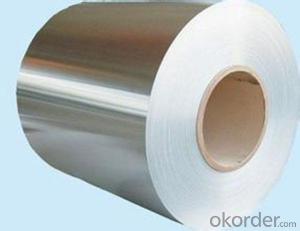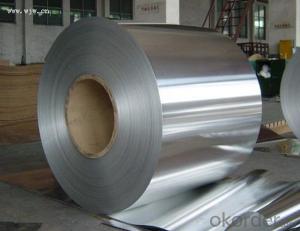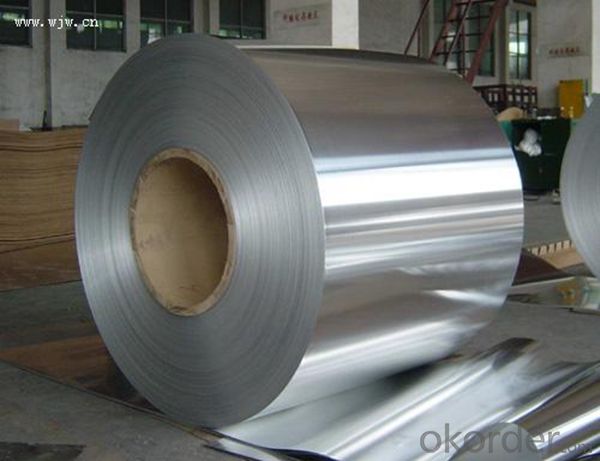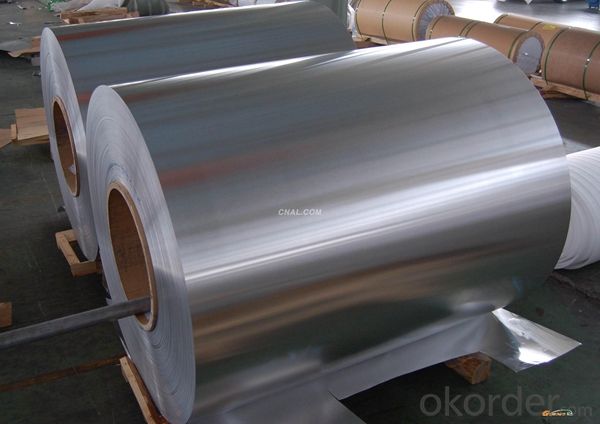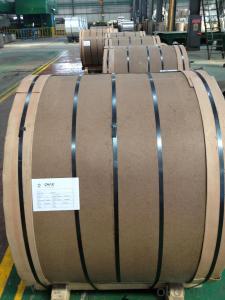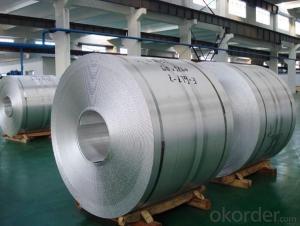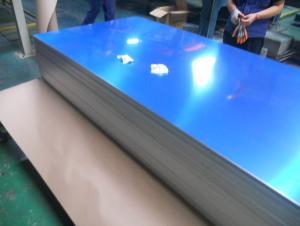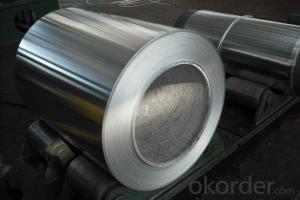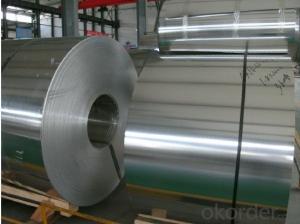H-34 Aluminum Sheets - CC Aluminium Cast Coil for Further Rolling
- Loading Port:
- Shanghai
- Payment Terms:
- TT OR LC
- Min Order Qty:
- 5 m.t.
- Supply Capability:
- 1000 m.t./month
OKorder Service Pledge
OKorder Financial Service
You Might Also Like
Specification
1. Structure of CC Aluminium Cast Coil for further rolling Description
CC Aluminium Cast Coil for further rolling is one semi-finished aluminium material. This coil can be rolled down to aluminium coil,sheet,circle ect. The alloy AA1050 is widly used in building, industry ect. Its weight is much lower than steel. So many customers choosed aluminium material instead of steel.
2. Specification of CC Aluminium Cast Coil for further rolling
Aluminum Coil/Sheet | |
Main Specification | |
Alloy | AA1xxx (AA1050, AA1060, AA1070, AA1100 etc.) |
AA3xxx (AA3003, AA3004, AA3005, AA3105 etc.) | |
AA5xxx, AA6XXX (AA5052,AA5083, AA5754, AA6061, AA6062 etc.) | |
AA8xxx(AA8011, AA8006 etc.) | |
Temper | F |
Thickmess | 0.01mm-100mm |
Width | 30mm-1700mm |
Standard | GB/T 3880-2006/ASTM |
Special specification is available on customer's requirement | |
3. Application of CC Aluminium Cast Coil for further rolling
(1).Interior: wall cladding, ceilings, bathrooms, kitchens and balconies, shutters, doors...
(2).Exterior: wall cladding, facades, roofing, canopies, tunnels,column covers , renovations...
(3).Advertisement: display platforms, signboards, fascia, shop fronts...
4. Feature of CC Aluminium Cast Coil for further rolling
Surfact Quality :
Be free from Oil Stain, Dent, Inclusion, Scratches, Stain, Oxide Dicoloration, Breaks, Corrosion, Roll Marks, Dirt Streaks and other defect which will interfere with use,
Mechenical Property:
Chemical Composite and Mechanical Property
5. Certificate of CC Aluminium Cast Coil for further rolling
SGS and ROHS(if client request, paid by client), MTC(plant provided), Certificate of Origin(FORM A, FORM E, CO), Bureau Veritas and SGS (if client request, paid by client), CIQS certificate
6. Image of CC Aluminium Cast Coil for further rolling 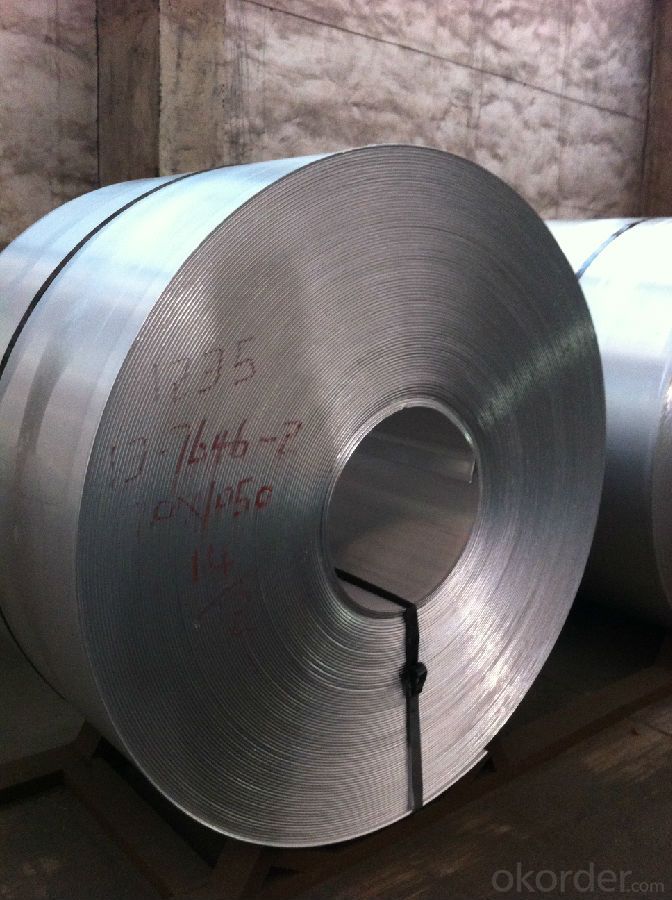
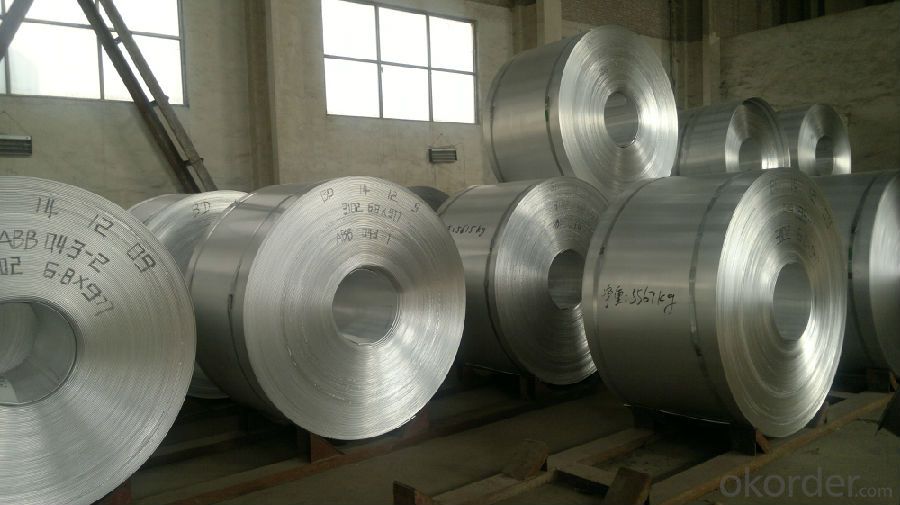
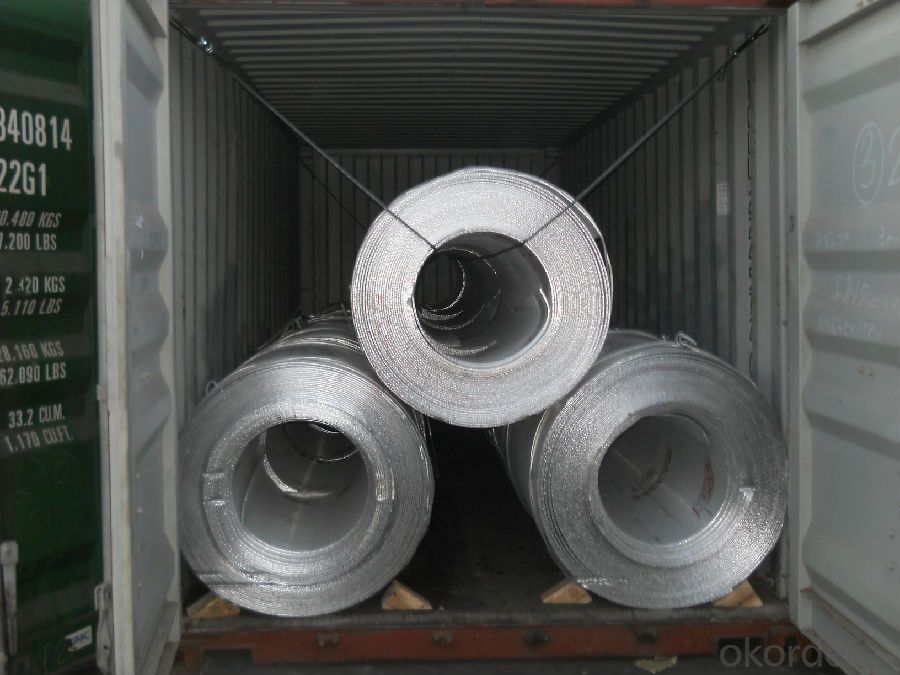
7. Package and shipping of CC Aluminium Cast Coil for further rolling
First, plastic cloth with drying agent inside; Second, Pearl Wool ; Third, wooden cases with dry agent , fumigation wooden pallets, aluminum surface could cover blue PVC film
8. FAQ
1) What is the delivery time?
Depends on actual order, around 20 to 35 days
2) What is the QC system:
We have QC staff of 20 persons and advanced equipment, each production is with MTC traced from Aluminum ingot lot.
3) What market do you mainly sell to?
Australia, America, Asia, Middle East, Western Europe, Africa etc
- Q: Which is better, a water bottle made out of steel or one made out of aluminum?
- Aluminum
- Q: Are there any health risks associated with using aluminum sheets?
- The use of aluminum sheets has sparked ongoing debate and research due to potential health risks. Although aluminum is widely utilized in various industries and products, it is crucial to consider certain factors. Health issues have been linked to exposure to high levels of aluminum through inhalation or ingestion. Studies suggest that aluminum exposure may be connected to neurological disorders like Alzheimer's disease or Parkinson's disease, as well as respiratory problems and bone disorders. Nevertheless, it is important to note that these studies have not definitively established a causal relationship between aluminum and these health conditions. The primary concern with aluminum lies in its ability to leach into food or beverages when it comes into contact with acidic or salty substances. This leaching can happen during food preparation or storage, especially when using aluminum cookware or foil. Consuming excessive amounts of aluminum through food or drink may pose health risks, especially for individuals with kidney disease or those who are more susceptible to aluminum toxicity. To minimize potential health risks, it is recommended to avoid using aluminum cookware or foil when cooking or storing acidic or salty foods. Instead, consider utilizing alternatives such as stainless steel, glass, or silicone. In conclusion, while there are worries about the potential health risks associated with using aluminum sheets, further research is necessary to establish a clear cause-and-effect relationship. It is wise to reduce exposure to aluminum, particularly through food and beverages, by taking preventive measures and employing alternative materials when suitable. Seeking guidance from healthcare professionals and staying informed about the latest research can assist individuals in making informed decisions regarding the use of aluminum sheets and other aluminum products.
- Q: Aluminum standard 30*25*2500 to 1000 1 how to calculate the number of materials needed?. 2 how to calculate the cutting loss?
- How many density units should be used in international units per kilogram of cubic meters, so that the unit of mass is kilogram? Weight = quality *9.81. The unit of cattle per kilogram is 5.4 kg of pure aluminum, and the weight is about 53 cows
- Q: Can aluminum sheets be easily bent or shaped?
- Due to its malleability, aluminum sheets are easily bendable and shapeable. This soft and lightweight metal possesses remarkable formability characteristics, making it highly suitable for various shaping processes. Numerous techniques, including press braking, roll forming, and stretch forming, can be used to easily bend, fold, or form aluminum into different shapes. Its malleability allows for the creation of intricate shapes without any cracking or breaking. Moreover, the low melting point of aluminum enables further shaping through processes like hot bending or thermoforming. As a result, aluminum sheets offer exceptional flexibility and ease of shaping, making them a favored choice in industries such as automotive, aerospace, construction, and manufacturing.
- Q: Can aluminum sheets be reused or recycled after their initial use?
- <p>Yes, aluminum sheets can be recycled again after use. Aluminum is one of the most recycled materials globally due to its low cost of recycling and its ability to retain its properties even after multiple recycling processes. Recycling aluminum saves energy compared to producing new aluminum from raw materials, and it helps reduce waste in landfills.</p>
- Q: Are the aluminum sheets suitable for electrical conductivity applications?
- Yes, aluminum sheets are suitable for electrical conductivity applications. Aluminum is a highly conductive material, with an electrical conductivity approximately 61% that of copper. This makes it a popular choice for various electrical and electronic applications where conductivity is important. Aluminum sheets are used in the construction of power transmission lines, electrical cables, bus bars, and heat sinks, among others. Additionally, aluminum is lightweight, corrosion-resistant, and has good thermal conductivity, which further enhances its suitability for electrical conductivity applications.
- Q: What does aluminum plate "3003-H24" mean?
- According to the main alloy aluminum alloy elements can be divided into 2 * * * for Al Cu alloy aluminum (Al--Cu), 3 * * * aluminum manganese alloy aluminum (Al--Mn), 4 * * * series of aluminum silicon alloy aluminum (Al--Si), 5 * * * for aluminium magnesium alloy aluminum (Al--Mg). 6 * * * for Al Mg Si alloy aluminum (AL--Mg--Si), 7 * * * for aluminum and zinc alloy aluminum [AL--Zn--Mg-- (Cu)].Aluminum status: 1, F: free machining status. 2 and O: annealed condition 3 and H: work hardening state. 4, W: solid solution heat treatment state. 5, T: heat treatment state.
- Q: What is the typical lead time for ordering aluminum sheets?
- The typical lead time for ordering aluminum sheets can vary depending on various factors such as the supplier, the quantity of sheets ordered, and the current demand for aluminum. However, in general, lead times for ordering aluminum sheets can range from a few days to several weeks. For standard-sized aluminum sheets that are readily available in stock, the lead time is usually shorter, typically ranging from a few days to a week. This is because suppliers often have these common sizes in their inventory and can ship them out quickly. On the other hand, if you require custom-sized aluminum sheets or a large quantity that is not readily available, the lead time may be longer. In such cases, the supplier may need to source the aluminum, cut it to the desired size, and process any necessary treatments or finishes. This process can take several weeks, especially if the supplier has a high volume of orders or if the aluminum needs to be imported. It is important to communicate with the supplier to determine the specific lead time for your order. They will be able to provide you with an estimated timeframe based on their current production capacity, stock availability, and any other factors that may impact the lead time.
- Q: I've heard certain eyeliners contain lead and that it's a harmful (cancerous) ingredient. I use Urban Decay's 24/7 eyeliner and on the box it says it contains aluminum powder. Is that another word for lead? If not, is aluminum powder harmful too? Thanks!
- Nope - not lead. Aluminum is one of the most common substances in the earths crust. Shouldn't hurt you. And actually fancy ladies covered their faces with white lead for a LONG time (Queen Elizabeth I white face was from white lead) - and these people didn't die even though they had quite a poisonous stuff on their skin.
- Q: There are about 200 holes on the aluminum plate to be machined. There are 100 M12 thread holes, and the rest are 15MM through holes. The tolerance is +0.02. Seeking detailed processing technology, is the first hole or first processing plane, how to control the amount of deformation of the plate, if the milling process can not guarantee flatness, on the grinder, then the 2 surfaces to stay 2MM margin? Are there any 15MM through holes that can be used to maintain tolerances, or do they need to be boring?. Great God advice, the best detail. Aluminum so much done before, no experience, if it does it scrapped.
- The thickness of 2 to 1. fly in place stress to ensure the flatness of the fitter leveling 0.13 more than the Xicheng pay attention to the protection of the appearance of 4 to ensure the flatness of the fabricated fitter. - this thing must not need to be so high, 100 M12 threaded holes, you still press the map to ensure that ah? Such a large plate deformation, 2 millimeters below the hole can be pressed to do
Send your message to us
H-34 Aluminum Sheets - CC Aluminium Cast Coil for Further Rolling
- Loading Port:
- Shanghai
- Payment Terms:
- TT OR LC
- Min Order Qty:
- 5 m.t.
- Supply Capability:
- 1000 m.t./month
OKorder Service Pledge
OKorder Financial Service
Similar products
Hot products
Hot Searches
Related keywords
